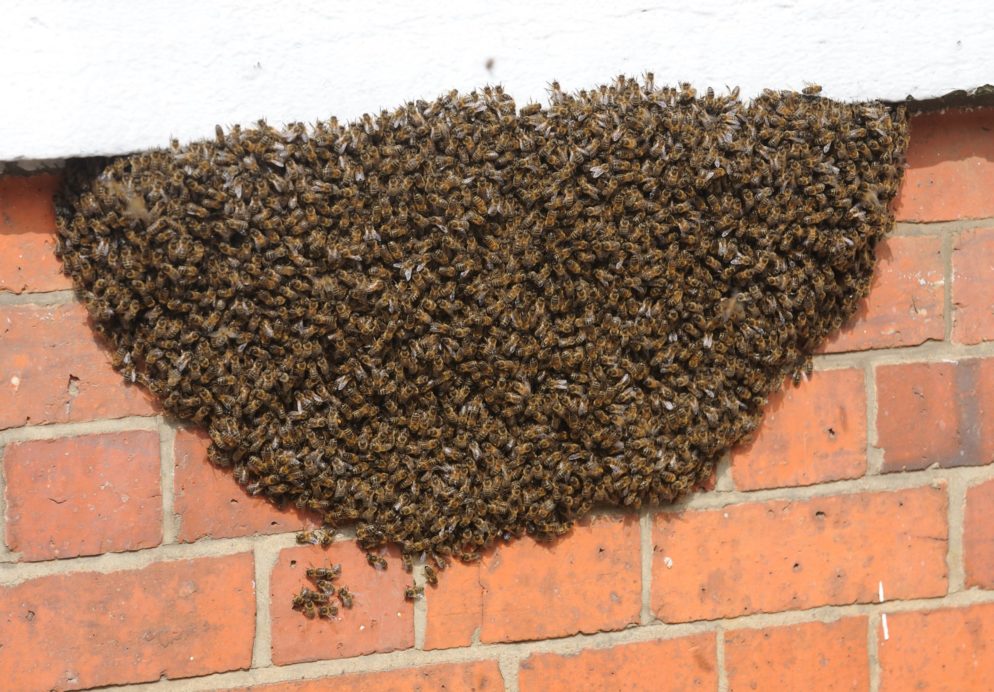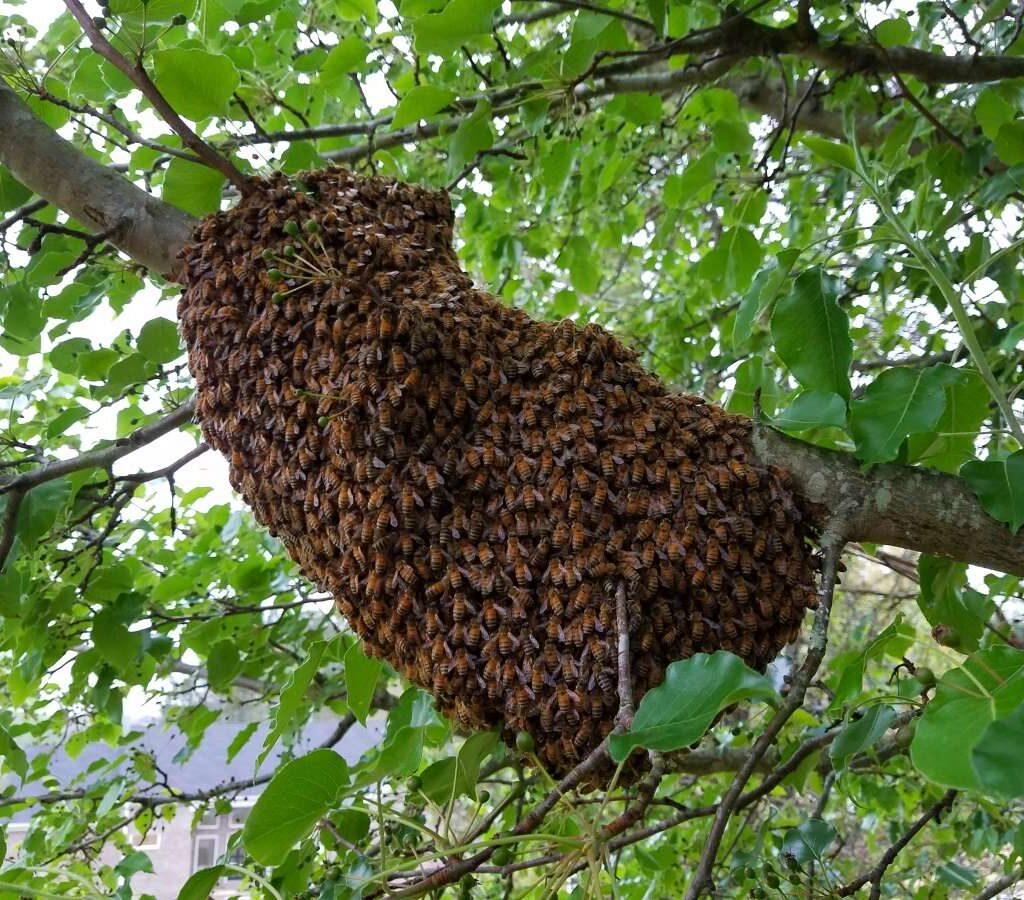
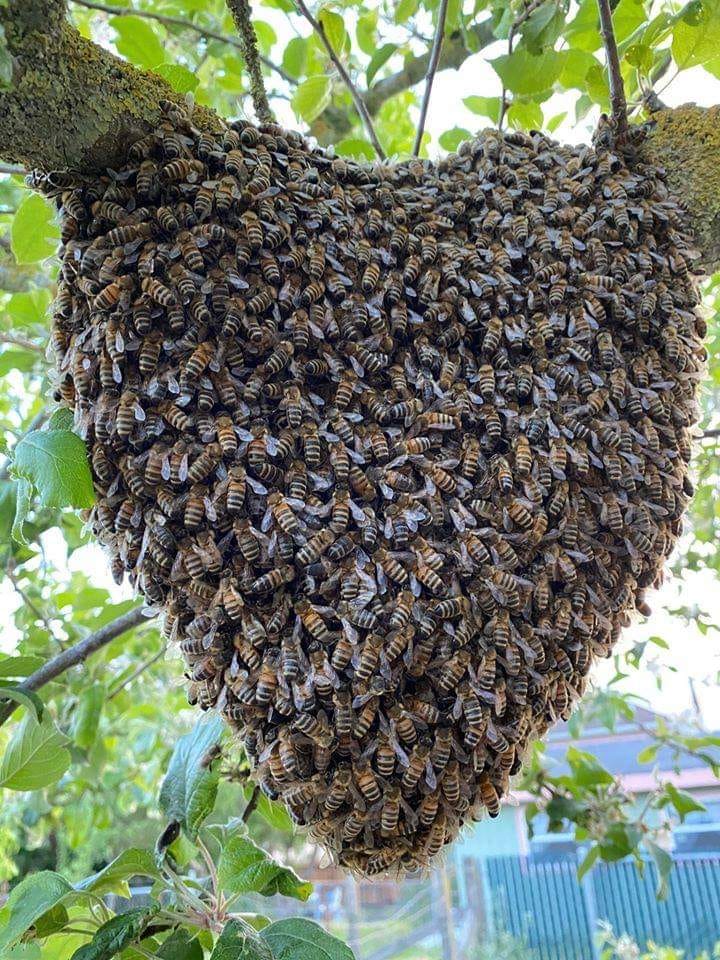
Did you suddenly just notice that a tree on your property has a huge growth on it like the picture above? Don’t worry, they are very docile at this point and will rarely sting during this time. An experienced beekeeper would be thrilled to come and rescue the bees from your tree, side of the house, fence post, etc. Time is of the essence, as most swarms will not stay in that clump for more than a couple hours. They have already sent scouts out to find a new home to move into! Once those scouts return, that clump is going to break up and head straight into their new home. Us beekeepers want to get them before that happens, as it could unfortunately be moving somewhere where they are not wanted, like inside a hole in the wall of your house! PLEASE DO NOT SPRAY THE BEES with anything!!
First, let’s make sure it’s a honeybee and not some other flying insect. Many people think anything that is yellow and buzzes is a honeybee. There are far more things that are not a honeybee. Wasps and hornets generally get misidentified the most. Please see the graphic below which should help if you can get close enough to ID them.
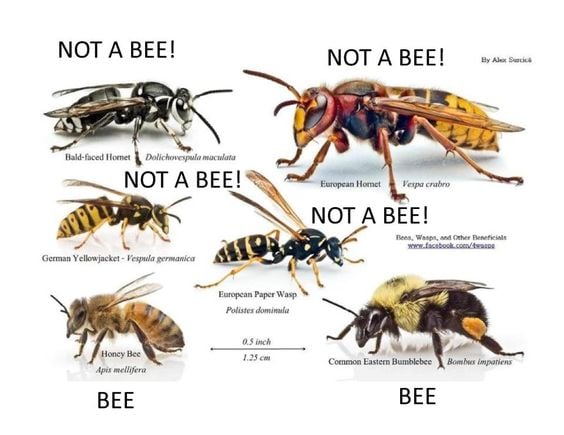
swarm and make clusters like those pictured above
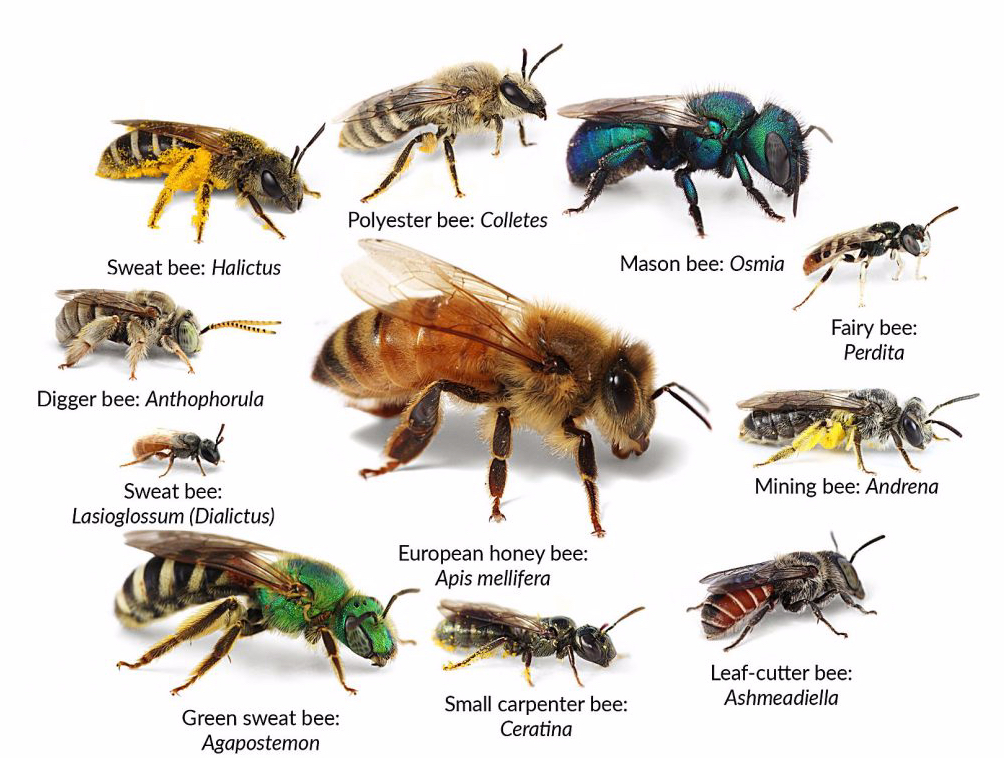
but they are solitary and do not swarm
There are also many types of native bees that were in North America long before honeybees were introduced from Europe! Nearly all of them are harmless and you most likely will never get stung by the native bees. In fact, many people will also have Mason bee or Leaf cutter bee houses for them. They are GREAT pollinators and their only purpose is to make more bees!
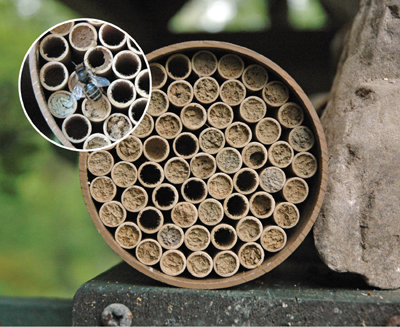
Hence why they are called Masons
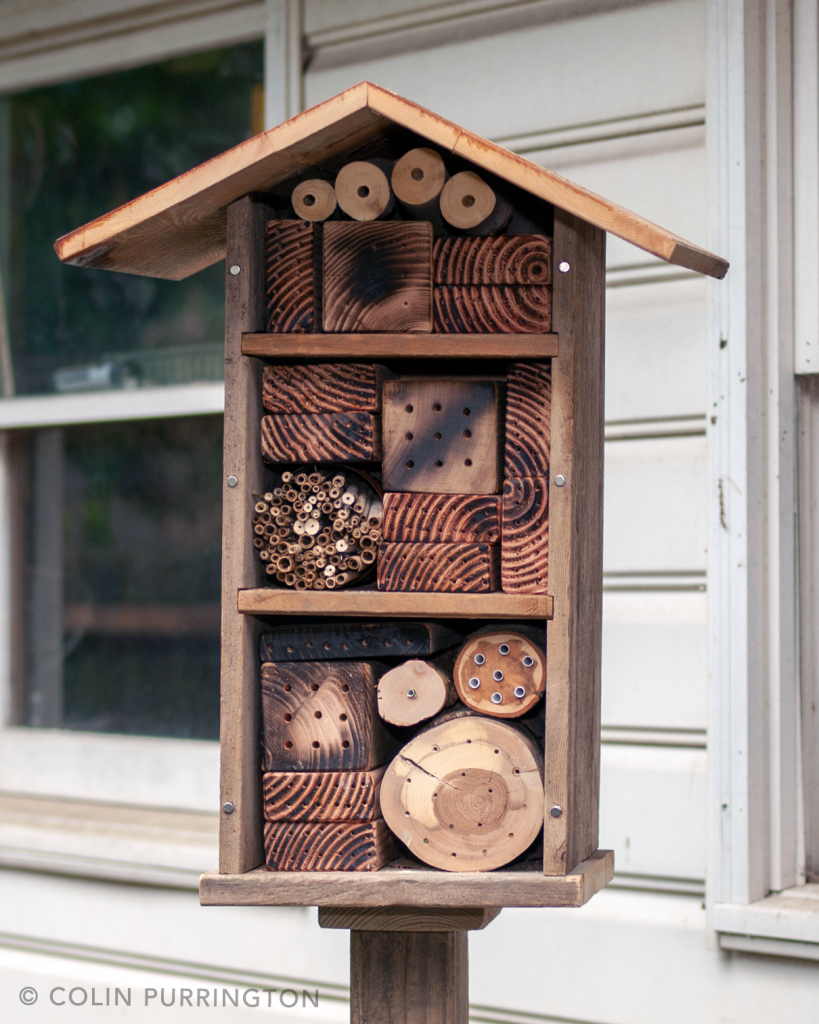
out for a few different species of native bees
Why do bees swarm??
Honeybee colonies can grow very rapidly, especially in the spring. Once the hive becomes to crowded, the bees will decide to split. They will raise a few new queens and then the old queen will pack up her things and take half of the colony with her to their new place. She may get tired because she hasn’t flown in a long time, so she may land somewhere. The other bees all gather around her to protect her at all costs! That is when you see the swarm clump! The queen is in the middle of that cluster. In a few days, the new queen will hatch and will start the process all over again. Queen bees can lay between 1200-1500 eggs PER DAY!
Bees have already moved into my soffit or into a wall, what can I do?
Chances are, the bees can still be saved. There are a few people on our swarm call list that have experience in extracting bees from homes. This is a challenging and time consuming process and will cost a fee. A beekeeper is most likely going to charge you less than an exterminator and a beekeeper is going to take care of the area, so more bees don’t move right back into the space.
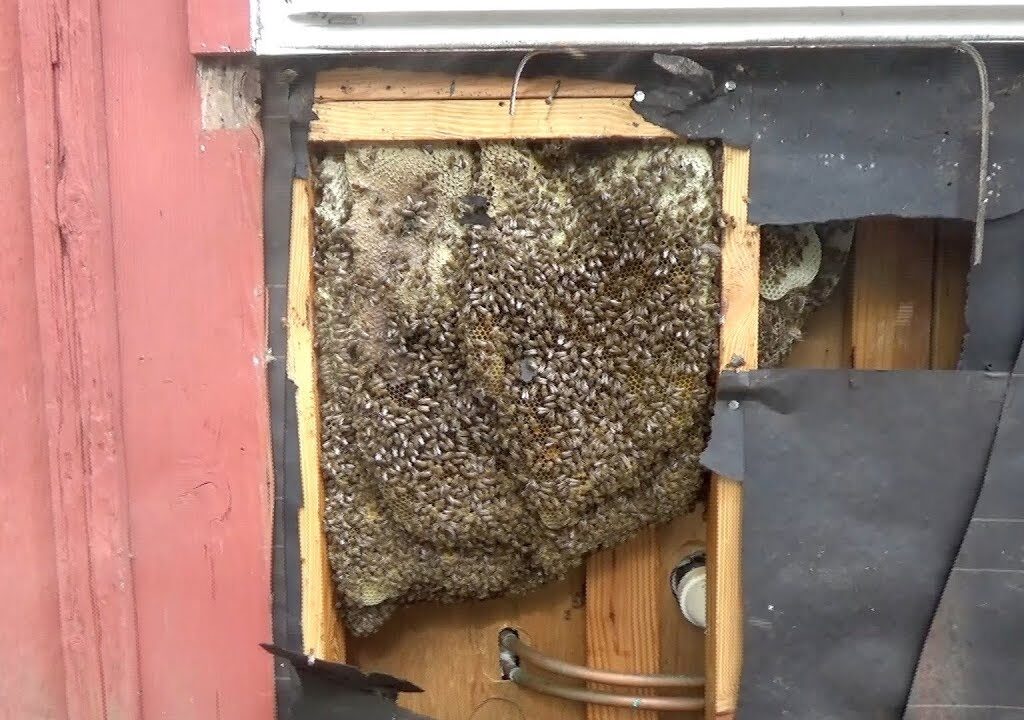
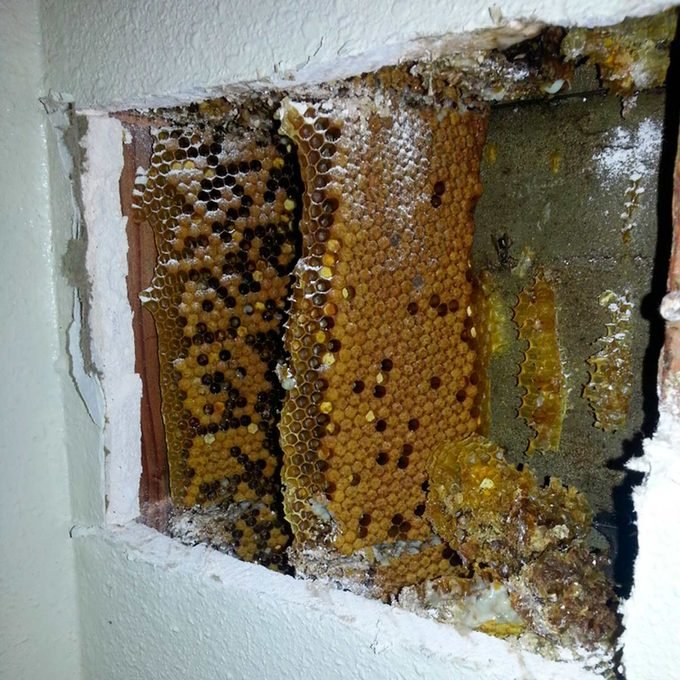
Reporting a swarm
Please refer to the map and call the closest beekeeper to you. If they can’t get to it, they will let you know and then find the next closest.
Before reporting a swarm, it’s important to take note of a few things that we are going to ask you when you call…
1. Location – Are they in a tree or on a building? How high up are they? Can they be reached without assistance or do we need to bring a ladder. Please give us an estimate on height. Any swarms over 20-30 feet might just be out of reach for us.
2. How long have they been there? Did you just see them move in? Has it been an hour or two?
3. Are we sure they are honeybees? If you can get a picture or video to send us, that will go a long way to making sure they are honeybees.
